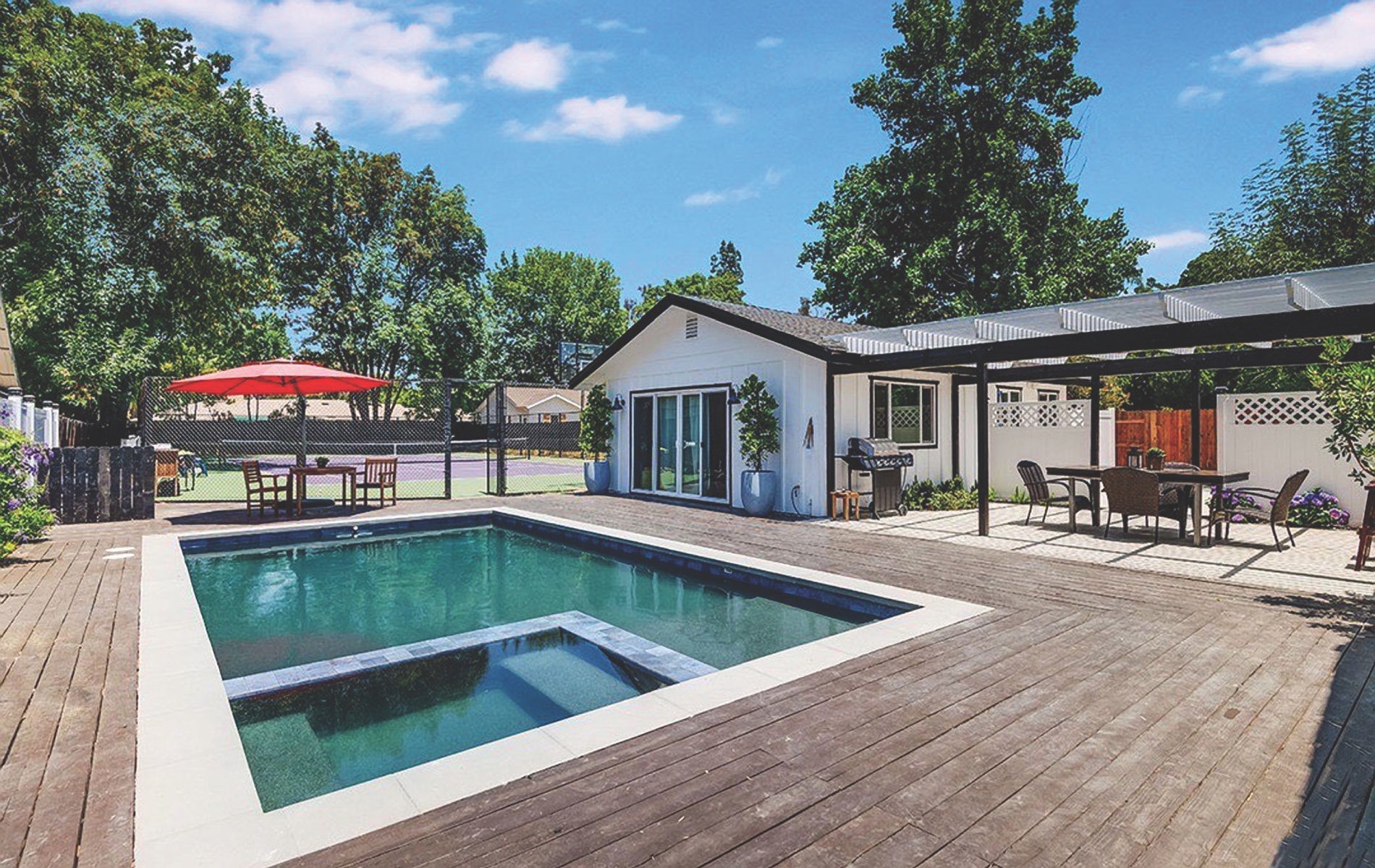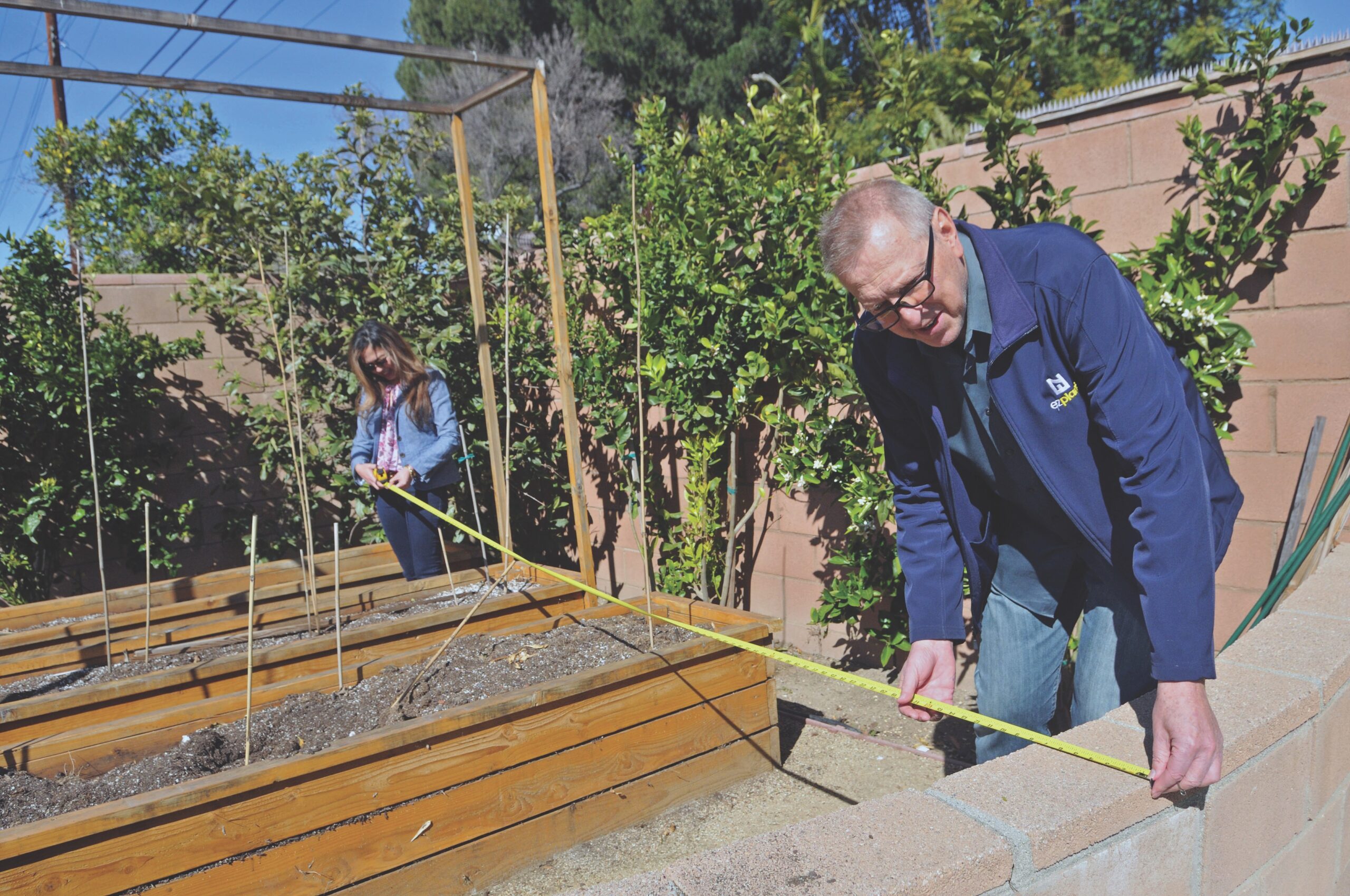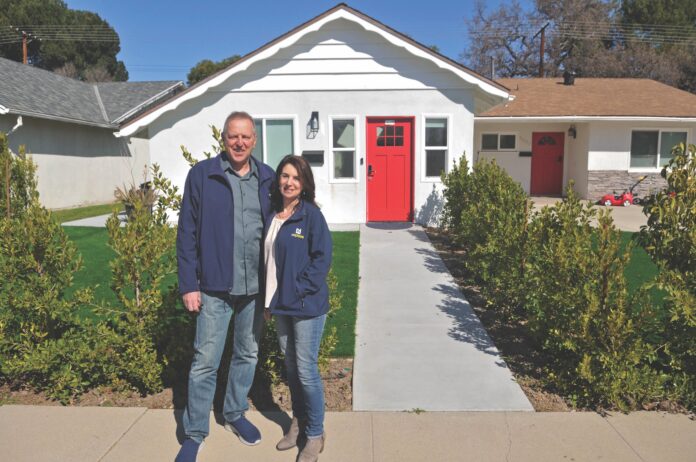Ray and Leslie Joelson, owners of Woodland Hills-based architectural firm EZ Plans, have seen demand for accessory dwelling units at their business increase since 2017, when state laws began to favor the building types.
The Joelsons said that one out of every three inquiry calls they receive is about ADUs.
Accessory dwelling units — also known colloquially as granny flats — are seen by some as a way of addressing the affordable housing crisis. Their popularity accelerated during the pandemic, and, rather than tailing off, is continuing to grow postpandemic, according to experts and a new report.
ADUs are increasing in popularity because of an eased regulatory process to get the units approved and the ongoing demand for more space.
ADUs, secondary housing units with independent living facilities on a residential lot in addition to a main house, are typically converted garages or freestanding units in the backyard.
San Francisco-based ADU builder Cottage — which has offices in Los Angeles and San Diego — recently released its 2022 ADU Impact Report looking at the rising demand for ADUs in California. The report’s initial findings show that Southern California remains the hottest ADU market in the country and that demand for ADUs outpaces actual builds: For every three ADU permits submitted in 2021, only one had resulted in a completed dwelling by the end of last year.
Rising demand

Alex Czarnecki, founder and chief executive of Cottage, said that in the Los Angeles market his company sees the most activity in West L.A. and the San Fernando Valley, adding that “60% of ADU permits from California were in L.A. in 2022.”
But while the state of California has made it easier to get ADUs approved, it is still a difficult process to navigate, said Czarnecki, reiterating the statistic that only one ADU for every three permits sought results in a build.
Czarnecki, who comes from a tech background, formed Cottage after his own experience creating an ADU for his parents in 2020 — at the height of the pandemic when ADU builds were on the rise.
“People stuck at home (were) thinking about, ‘What if I had a little bit of extra space?’” Czarnecki said. “The longer you spend at home, the longer you think of improving it. We saw this interesting dynamic of during the pandemic a lot of families looking to bring their elderly parents out of the senior living center to be closer together during such an uncertain time.”
Czarnecki believes the pandemic was but one factor boosting the ADU space.
“The other boost which happened on pretty similar timing was regulatory,” Czarnecki said. “Across California, the state has continued to pass, year by year, additional legislation that makes it easier for homeowners to build ADUs. The ADU space has been doubling year over year since 2018 in a lot of these markets.”
Paul Dashevsky and Jon Grishpul founded GreatBuildz, an Encino-based firm that matches homeowners with contractors for home construction projects. They said that ADUs were trending until the middle of last year.
“There was a lot of interest in the pandemic and into 2021, and then in the back half of 2022 we felt a real slowdown,” Dashevsky said. “That seemed to coincide with interest rates going up. We noticed folks in the planning and ideation stages were putting their projects on hold.”
Now the interest in ADUs appears to be coming back.
(As of January), we’re seeing people revisit those projects and a new interest,” Dashevsky said. “My sense is the rates are now the new normal and people that were thinking of putting it on hold figure, I’ve still got my job, I can still get a loan, I still want to do this.”
Grishpul added that he was seeing the most development in areas like Glendora, Glendale and Pasadena.
“I’d say 40% of our business happens to be ADUs, because that’s what everyone wants to do,” Dashevsky said, adding that half of all ADU projects are garage conversions.
Shawn Mizrachi, owner of West L.A.-based MDM Customer Remodeling, said that 60% of his ADU projects are garage conversions, adding that 40% are ground-up projects.
According to Mizrachi, there are three scenarios behind the build of an ADU: moving a relative onto the property; needing more space to work from home; and rental income.
“Those are the three types of customers,” he said.
MDM Custom Remodeling builds ADUs all over Los Angeles County in communities where there are single-family homes.
Even though California had begun to relax rules and regulations about creating ADUs in 2017, Gov. Gavin Newsom more recently removed many more obstacles for Californians interested in building the structures. The new laws went into effect in 2020.
Among the new directives: Californians are now permitted to create two ADUs on a single-family zoned property consisting of one full accessory dwelling unit and one junior accessory dwelling unit, or JADU. A JADU can be a maximum of 500 square feet and is created by converting part of an existing residence, such as a spare bedroom or an attached garage.
Rules and regulations

Beginning in 2020, homeowners can also build a detached ADU of 800 square feet and 16 feet tall without any local discretionary approvals. ADUs created by conversions were also granted automatic approval. Many of the requirements regarding parking and setbacks have also been minimized, and ADUs can be added to multifamily dwellings, either in spaces such as carports and storage rooms.
In the absence of such spare spaces, two ground-up detached ADUs can be built.
Facilitating ADU building is the mandate that California cities approve or deny ADU projects within 60 days of receipt of application. (Prior to 2020, the window of time was 120 days.)The impact of the state laws is reflected in the number of permits issued. From 2017 to 2021 the number of ADU permits issued in the city of Los Angeles increased by 202% across the four-year span.
From Jan. 1 to Aug. 31, 2021, a total of 3,371 ADU permits were issued, and by the end of the year, 5,188 permits were given a green light, according to publicly available Department of Building and Safety data. The figure was surpassed last year, as 4,999 permits were issued in the first eight months of 2022 — an increase of 48%.
Complicated process
The Joelsons, of EZ Plans, said that the average cost for a garage conversion is $150,000, while new construction could cost between $300,000 and $500,000, depending on the specifics.
“The garage conversion is very appealing to so many people because it’s adding value to their house,” Lesley Joelson said. “Garage conversions are the least expensive way for a homeowner to create an ADU. At least 65% of the ADUs we do are garage conversions.”
Ray Joelson said that many clients seek to take advantage of what the law allows.
“If you have a two-car garage, you’re going to capture 400 square feet,” Ray Joelson said. “The typical law allows you about 1,200 square feet. So if people are looking to maximize their return on investment on building an ADU, those clients don’t go for the garage conversions, they tend to go for the new detached two-story, 1,200-square-foot maximum square footage in the backyard.”
Lesley Joelson said there are often discrepancies in regulations between state and individual municipalities.
“The state sets the guidelines for ADUs but the various city jurisdictions often overlay additional restrictions and limitations on elements like the height and size of ADUs, or parking restrictions,” she said. “This is a very contentious issue and it creates a lot of confusion for homeowners. The individual cities are ultimately in control because they approve the building permit.”
Ray Joelson said that complications also arise when dealing with overlay zones. As a result, EZ Plans helps the client navigate the nuances of building ADUs in different neighborhoods.
